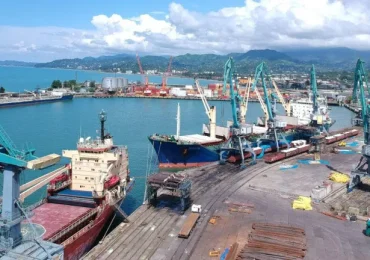Photo courtesy of CMMZE
The global push for sustainable energy solutions has placed green hydrogen in the spotlight of the renewable energy shift. Energy solutions company Compagnie Maritime Monegasque Zero Emission (CMMZE) allies with countries seeking to reduce their carbon footprint and transition away from fossil fuels.
About CMMZE
CMM Zero Emission (CMMZE) is a sustainable energy solutions company that develops green hydrogen projects. With over 19 years of experience in the market, CMMZE focuses on producing green hydrogen using electrolyzers powered by renewable energy sources.
CMMZE’s strategy covers the entire value chain of green hydrogen production, from renewable energy generation to storage, transportation, and export. The company’s flagship project is located in Zarzis, Tunisia, aiming to produce 60 tons of green hydrogen daily.
Additionally, CMMZE has secured a long-term concession in Nador West Med, Morocco, as well as United Arab Emirates, for other facilities with the same planned production capacity as its project in Zarzis.
Investing in infrastructure, including advanced electrolyzers, liquefaction facilities, and storage solutions, makes creating a production network in North Africa possible. In Nador West Med, for example, CMMZE plans to implement a 3-kilometer pipeline using Liquid Organic Hydrogen Carrier (LOHC) technology to transport hydrogen from the production site to the port.
Green Hydrogen in the Spotlight
Green hydrogen has recently gained massive attention as a critical component in the global transition to clean energy. Unlike grey or blue hydrogen produced using fossil fuels, it is generated through water electrolysis using renewable energy sources.
This process produces zero carbon emissions, making it an ideal solution for decarbonizing various sectors, including industry, transportation, and heating.
The green hydrogen industry is experiencing rapid growth and attracting substantial investment. According to a 2024 report by the Hydrogen Council and McKinsey & Company, if African countries can secure just 15% of the anticipated global hydrogen market by 2050, it could boost their economies by $126 billion.
Moreover, the European Union has set ambitious targets for green hydrogen production and import, aiming to produce 10 million tonnes and import 10 million tonnes by 2030. This growing interest is driven by its potential to reduce greenhouse gas emissions significantly.
Notably, CMMZE’s efforts closely align with the European Union’s Hydrogen Strategy, which aims to establish at least 6 gigawatts (GW) of renewable hydrogen electrolyzer capacity by 2024 and up to 40 GW by 2030. Its production targets contribute significantly to meeting these European objectives, helping to meet supply and demand for this type of energy in Europe.
Exporting green hydrogen to Europe enables CMMZE to support the continent’s transition to cleaner energy sources and helps reduce its dependence on fossil fuels. This alignment with European initiatives guarantees a ready market for CMMZE’s products while fostering closer energy cooperation between North Africa and Europe. It creates a mutually beneficial partnership to pursue a greener future.
Using North Africa’s Renewable Energy Potential
North Africa boasts immense renewable energy potential, particularly in solar and wind power. CMMZE capitalizes on this abundant resource to power its production facilities. The company integrates solar photovoltaic (PV) plants and wind farms into its operations, connecting them to local electricity networks to guarantee a stable and sustainable energy supply for hydrogen production.
Harnessing North Africa’s renewable energy potential, CMMZE guarantees the production of truly green hydrogen and promotes the development of renewable energy infrastructure in the region.
Economic and Environmental Impact Across Regions
The energy solution company’s green hydrogen projects offer huge economic benefits to North Africa and Europe. For example, developing green hydrogen facilities in North Africa creates job opportunities and economic growth.
These projects attract investment in renewable energy infrastructure, contributing to the region’s overall development and positioning it as a critical player in the global green energy market.
From an environmental perspective, the initiatives also reduce greenhouse gas emissions in both regions. Focusing on renewable energy-powered hydrogen production in North Africa also promotes clean energy infrastructure development, reducing the region’s carbon footprint and setting a precedent for sustainable industrial development.
Undeniably, CMMZE’s efforts accelerate the transition to low-carbon economies while creating a model for global partnerships in renewable energy. This opens the way for hope and practical solutions to escalating climate challenges.
















